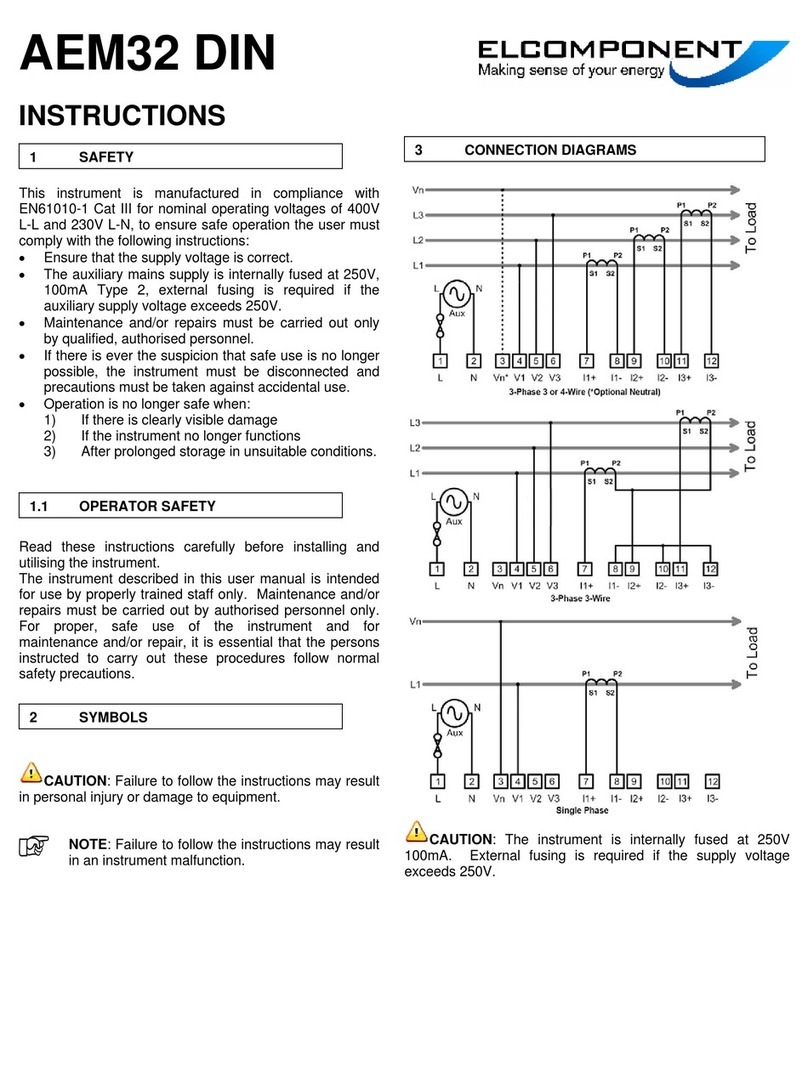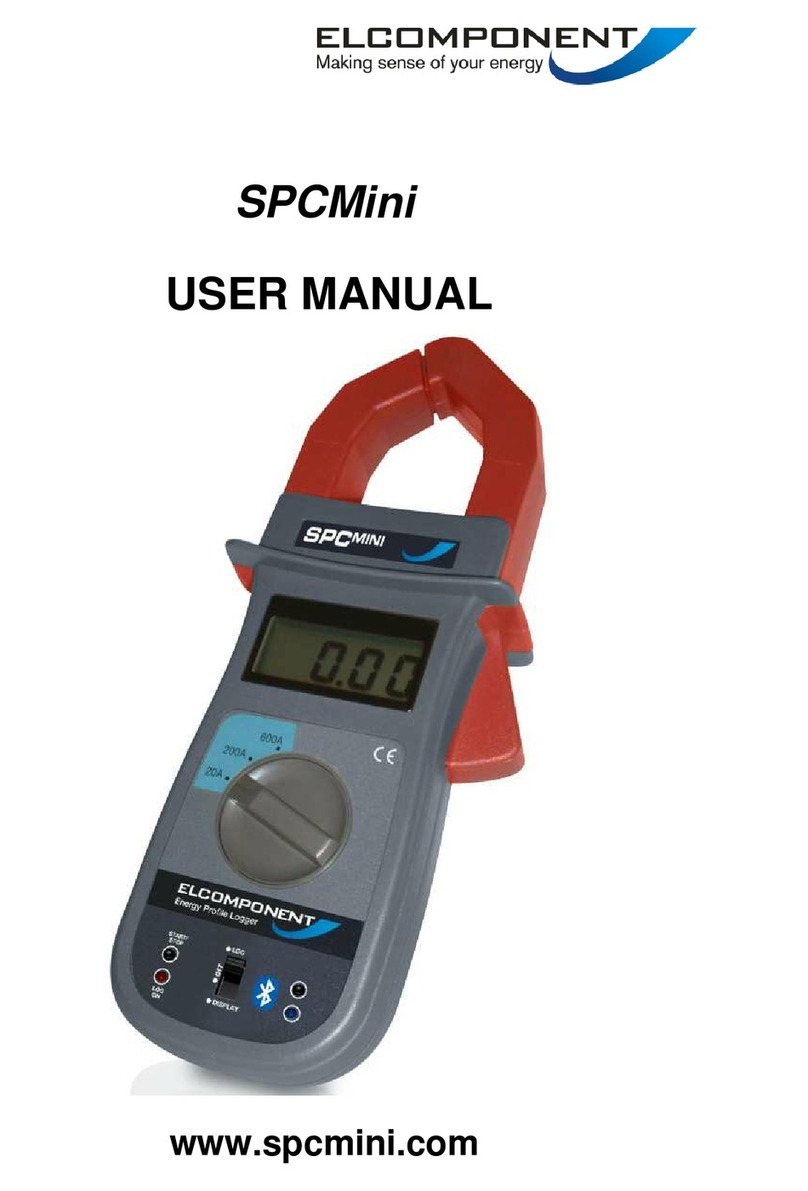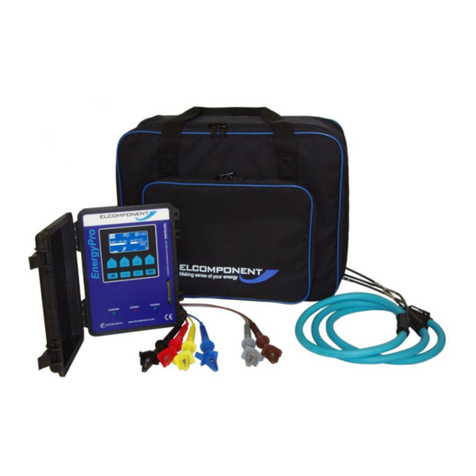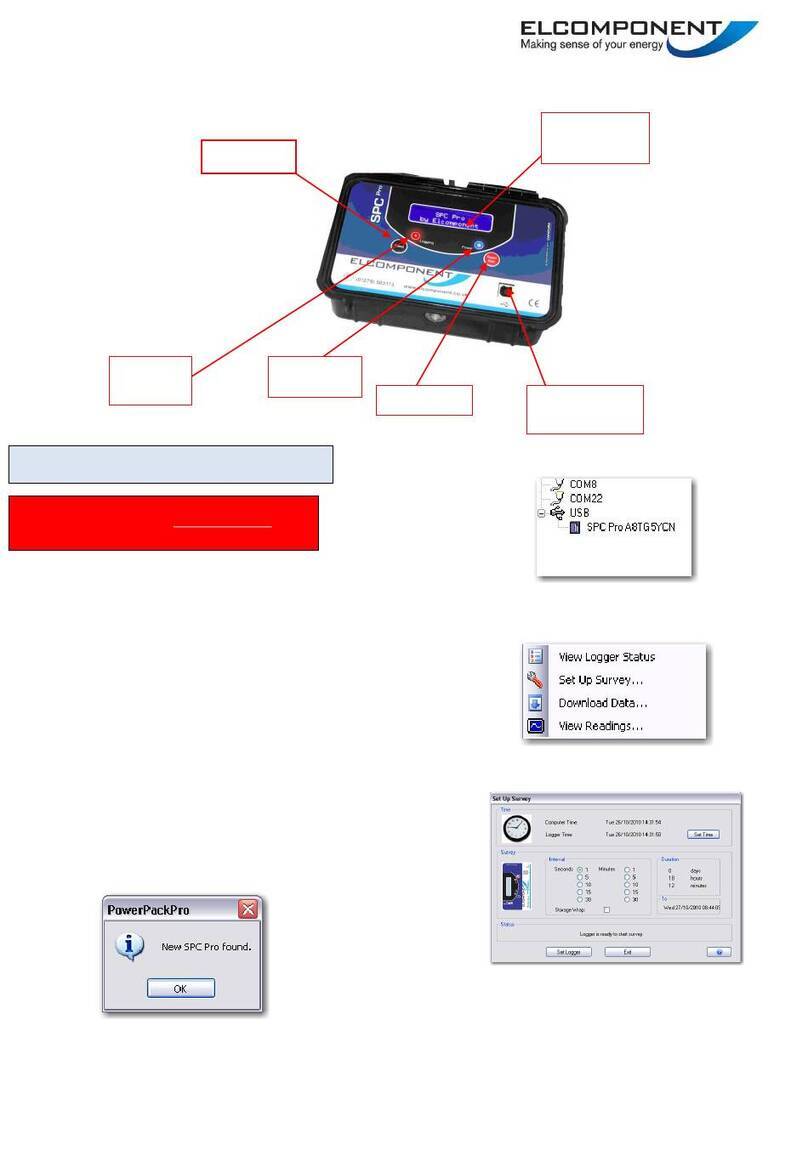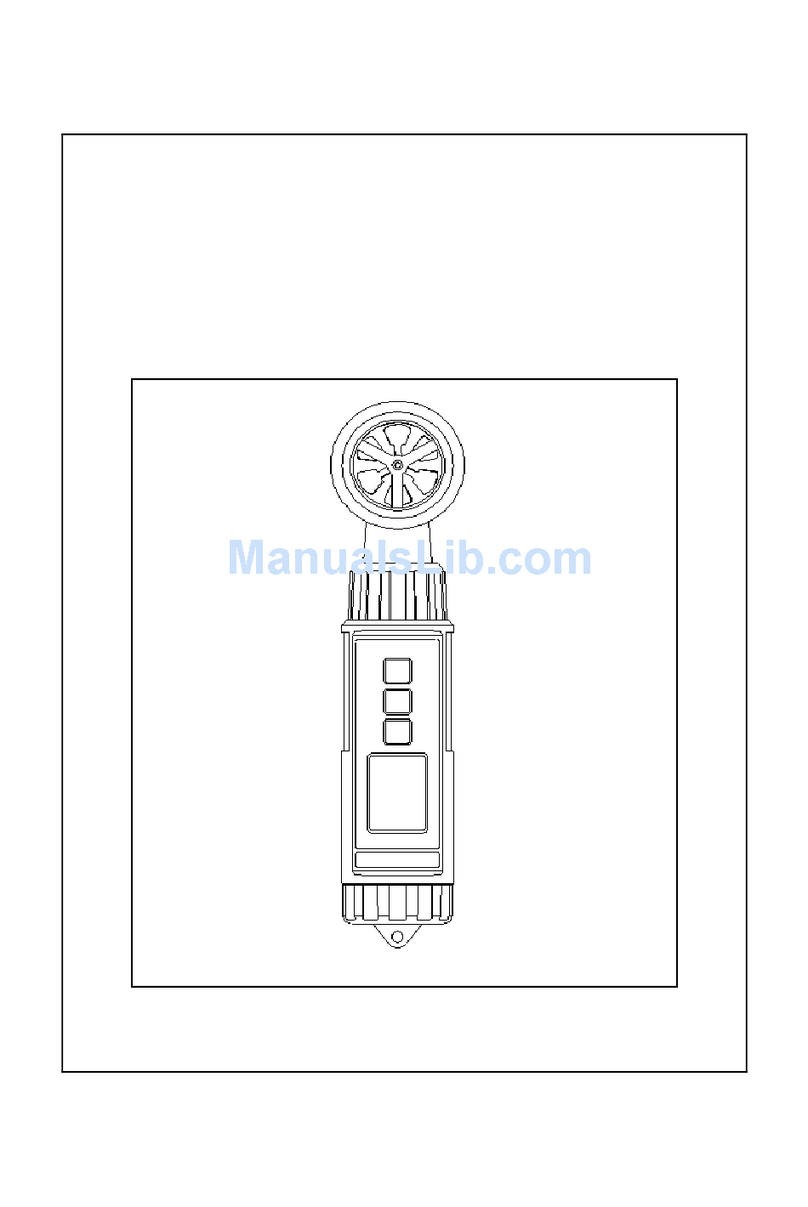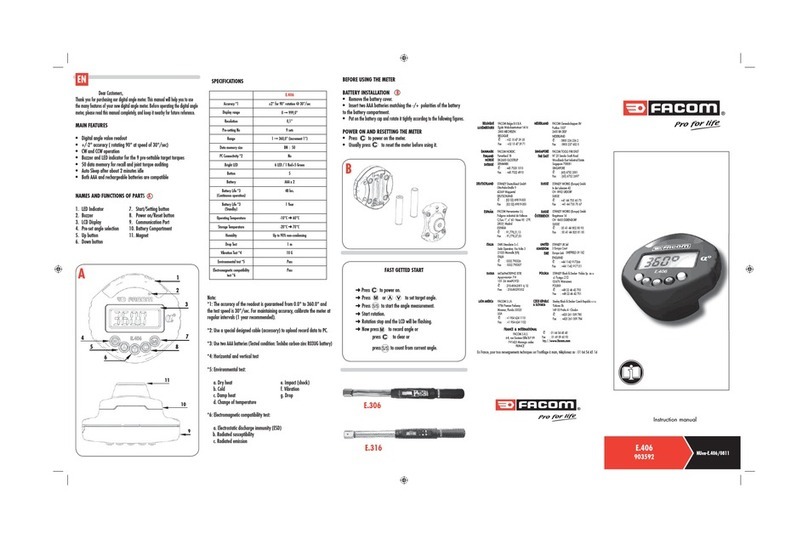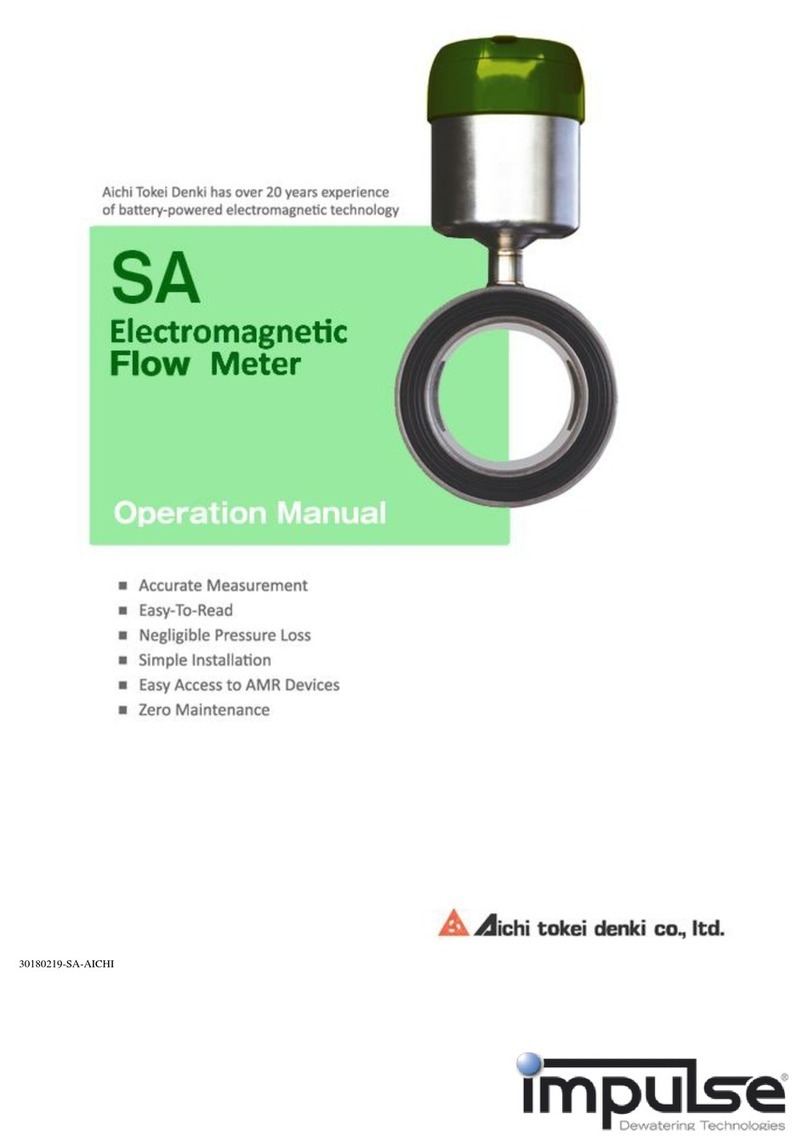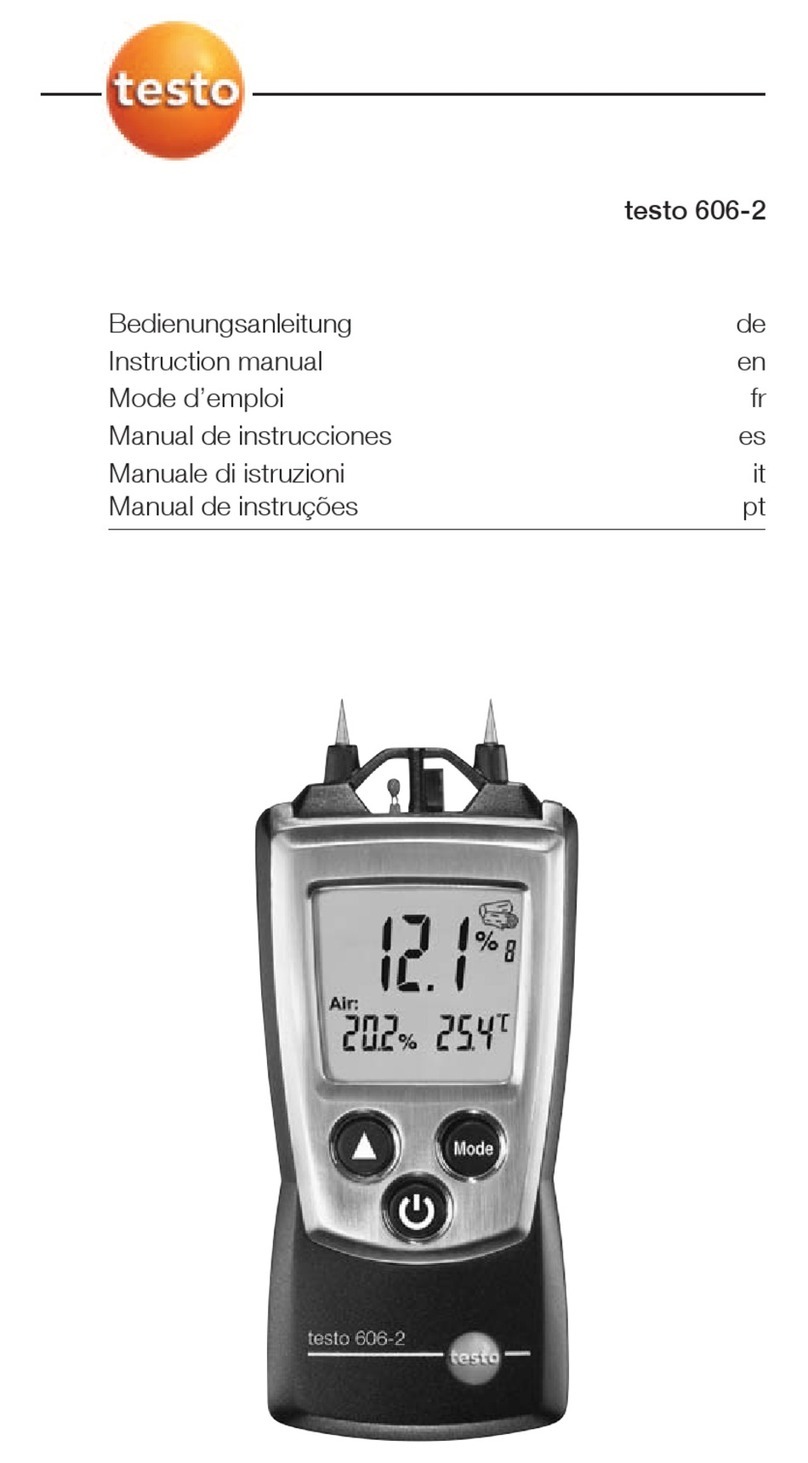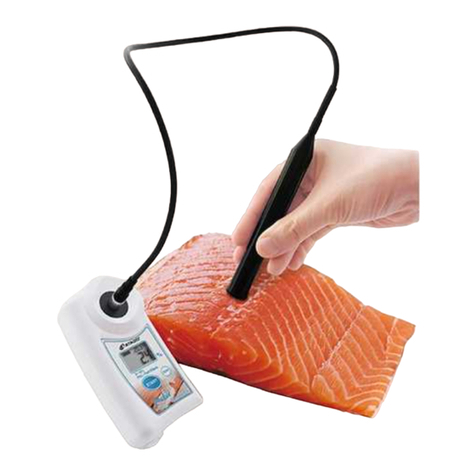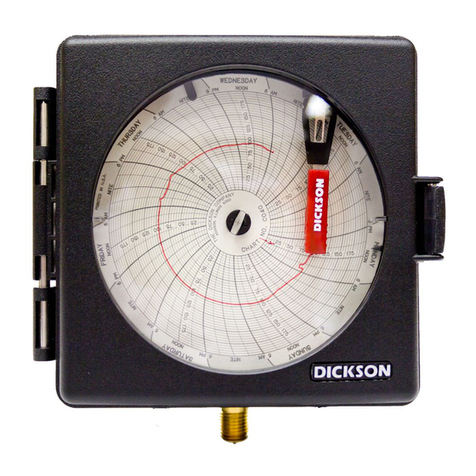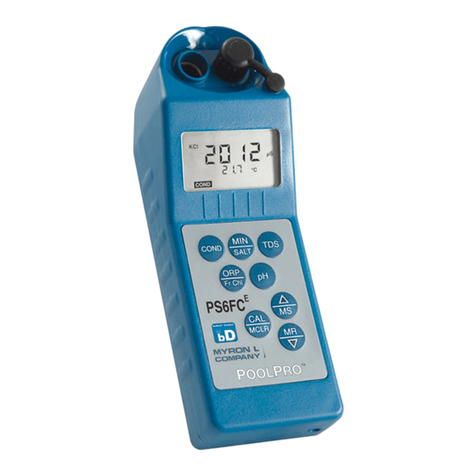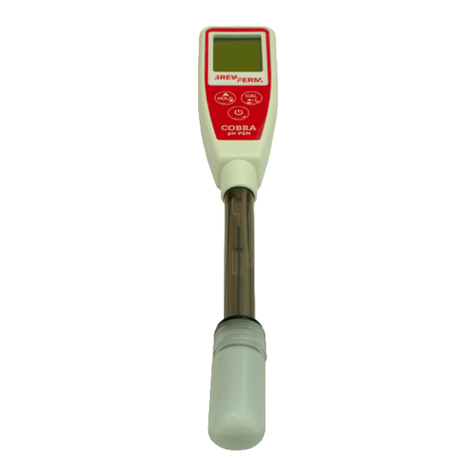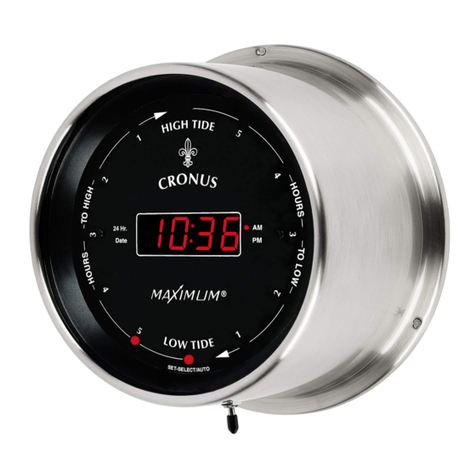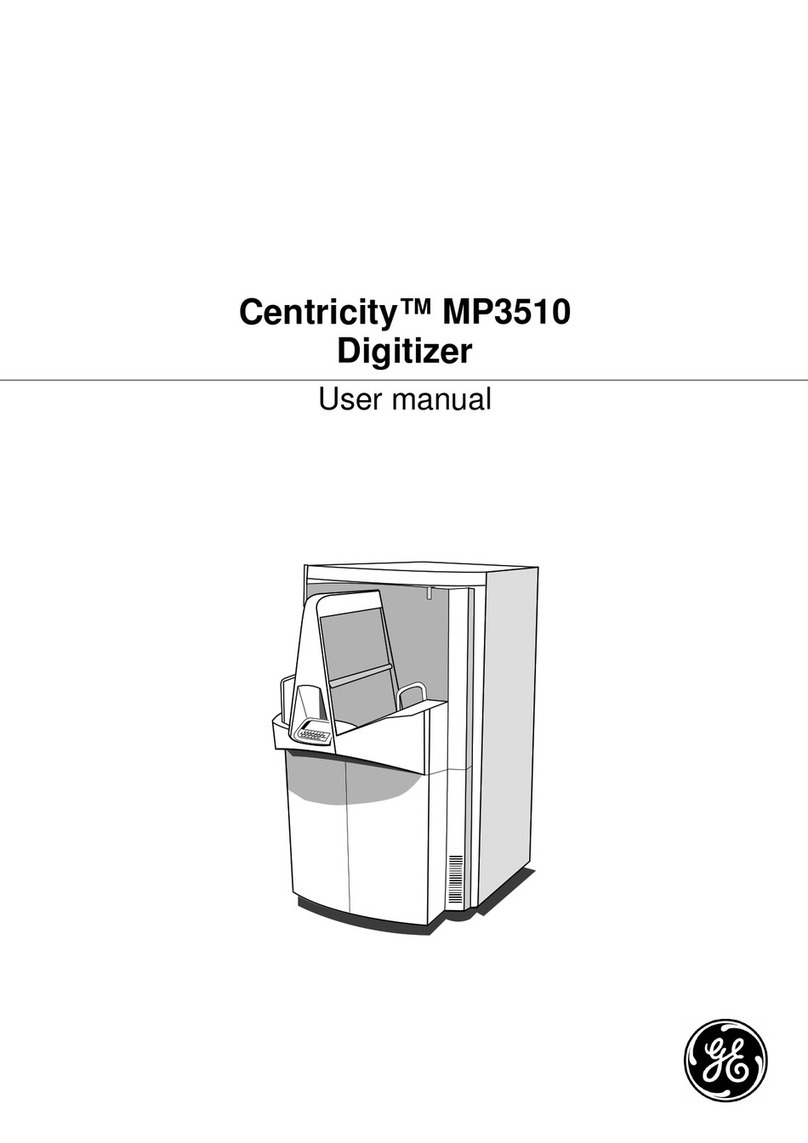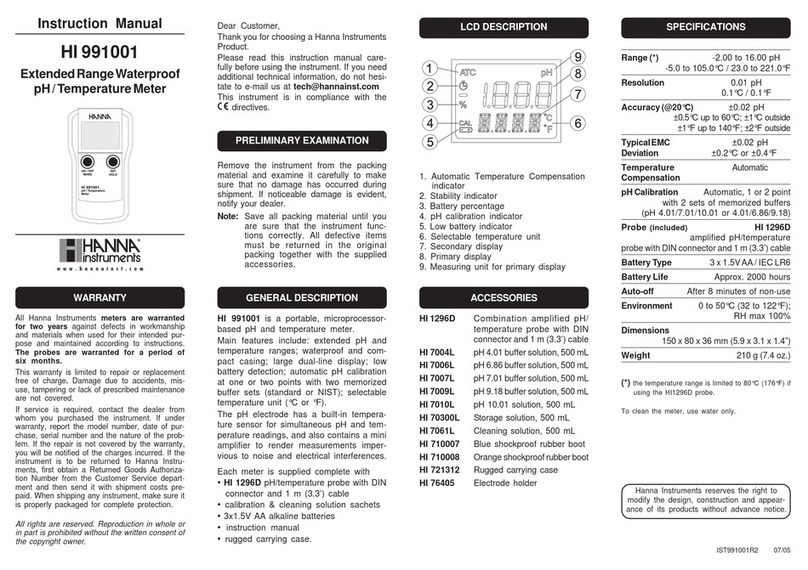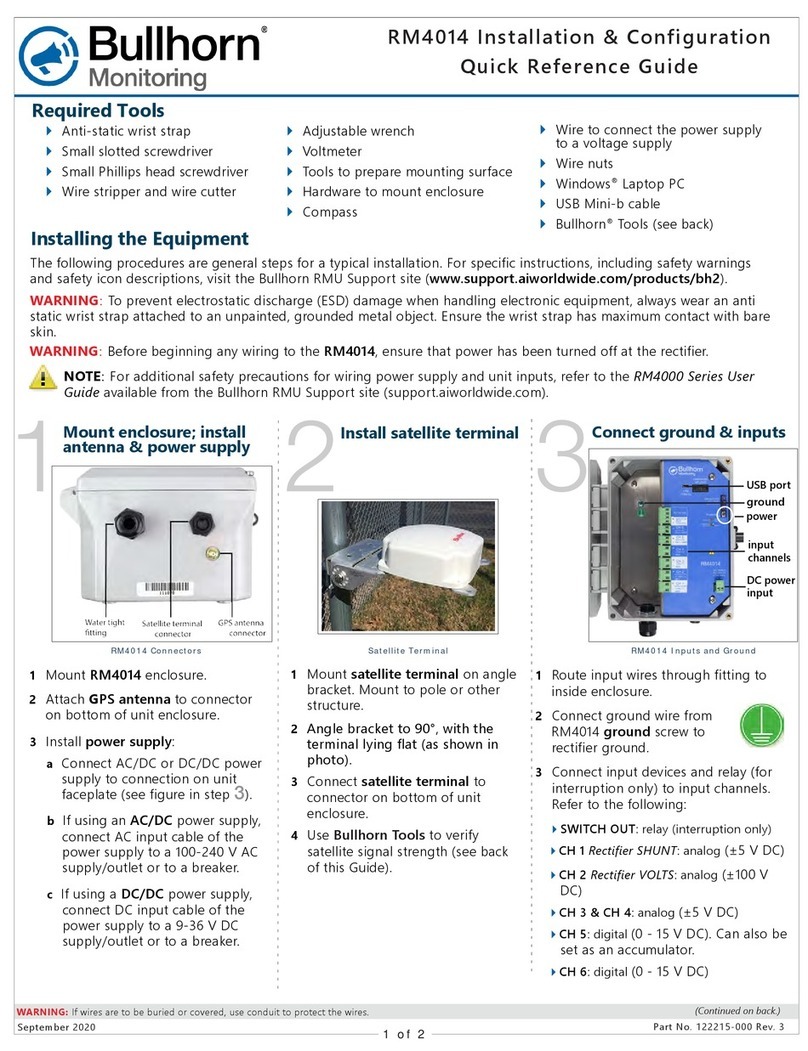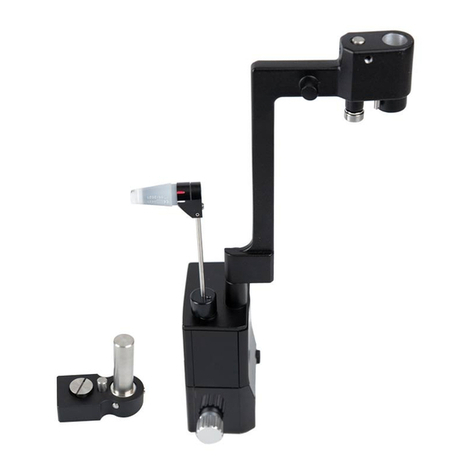Elcomponent AEM33 P 485 User manual

AEM33 P 485
INSTRUCTIONS
This instrument is manufactured in compliance with EN61010-1
Cat III for nominal operating voltages of 400V L-L and 230V L-N,
to ensure safe operation the user must comply with the
following instructions:
Ensure that the supply voltage is correct.
The auxiliary mains supply is internally fused at 250V,
100mA Type 2. External fusing is required if the auxiliary
supply voltage exceeds 250V.
Maintenance and/or repairs must be carried out only by
qualified, authorised personnel.
If there is ever the suspicion that safe use is no longer
possible, the instrument must be disconnected and
precautions must be taken against accidental use.
Operation is no longer safe:
1) If there is clearly visible damage
2) If the instrument no longer functions
3) After prolonged storage in unsuitable conditions.
Read these instructions carefully before installing and utilising
the instrument.
The instrument described in this user manual is intended for
use by properly trained staff only. Maintenance and/or repairs
must be carried out by authorised personnel only. For proper,
safe use of the instrument and for maintenance and/or repair,
it is essential that the persons instructed to carry out these
procedures follow normal safety precautions.
CAUTION: Failure to follow the instructions may result in
personal injury or damage to equipment.
NOTE: Failure to follow the instructions may result in
an instrument malfunction.
(OPT)
(OPT)
(OPT)
CAUTION: The instrument is internally fused at 250V 100mA.
External fusing is required if the supply voltage exceeds 250V.
1 SAFETY
1.1 OPERATOR SAFETY
2 SYMBOLS
3 CONNECTION DIAGRAMS

The AEM33 is suitable for use with current transformers (CTs)
with 5A secondary output. Metering quality CTs of Class 1
accuracy with a minimum rating of 2.5VA are recommended.
Connections should be made according to the diagrams above.
CAUTION:
The pulse output contacts are rated at 100mA AC/DC, 100V
max. Under no circumstances should this rating be exceeded.
The AEM33P is fitted with a single pulse output proportional to
kWh. The output has a telltale l.e.d. on the front panel which
flashes ‘on’ to indicated that a pulse has been counted.
The pulse connections are: Terminals 13 & 14
The contacts are volt free and therefore an external power
supply must be provided.
13 14
The RS485 output consists of 3 pairs of terminals located at the
bottom left of the rear panel of the instrument. These should
be connected via the correct specification cable to the data bus.
(Refer to Elcomponent for cable recommendations.)
Terminal connections are as follows:
19 & 20 = A 21 & 22 = B 23 & 24 –0V
19 20 21 22 23 24
AB 0V
NOTE: It is essential that polarity is respected when other
units are connected to the bus.
When the instrument is powered up, the display will initially show
the internal software version, then after a few seconds will start
displaying measured values. The four buttons allow the user to
scroll through the available measurements.
ENERGY DISPLAYS
Press to select kWh, kVArh, KVAh and Hours Run pages.
The Hours Run register accumulates the total time during which the
average 3 phase load current exceeds a preset level. This is always
displayed with a resolution 0.1 hour.
The percentage level of (l1+l2+l3) at which the Hours Run register
accumulates is user programmable from 1% to 100% of full scale
current.
Press and together and hold for 2 seconds to reset the
hours run register.
3.1 CONNECTION OF THE CURRENT INPUT
3.2 PULSE OUTPUT CONNECTIONS
4 INSTRUMENT OPERATION & SET-UP
3.3 RS485 CONNECTIONS
kWh
kVArh
kVAh
Hours Run
3.1 CONNECTION OF THE CURRENT INPUT
3.2 PULSE OUTPUT CONNECTIONS

VOLTAGE DISPLAYS
Press to select from the following displays:
CURRENT DISPLAYS
Press to select from the following displays:
POWER DISPLAYS
Press to select from the following displays:
NOTE: The symbol following the VAr value = capacitive
load. A negative indicator before the VAr value indicates
exported reactive power.
NOTE: The symbol following the PF value = capacitive
load.
NOTE: The symbol following the kVAr value =
capacitive load.
Phase –N
Voltages 1-3
Line –Line
Voltages 1-3
Max Phase –N
Voltages 1-3
Average Phase –N
Voltages 1-3
Max Average
Phase –N
Voltages 1-3
Phase Current
1-3
Max Phase
Current
1-3
Average Phase
Current
1-3
Max Average
Phase Current
1-3
Phase Active Power
1-3
System Power –
Reactive, Apparent
Active
Voltages 1-3
System
Balance Current (I1+I2+I3)
Frequency (V1)
PF
Phase Apparent Power
1-3
Phase Reactive Power
1-3

NOTE: The symbol following the Cos value =
capacitive load.
INSTRUMENT SET-UP
To enter programming mode press and simultaneously
for 5 seconds. The display shows the CT settings screen. The
instrument settings are entered from this point, starting with
the CT values.
CT SET-UP
The CT primary value may then be set from the following
nominal values (secondary value must be 5A):
5, 10, 15, 20, 30, 40, 50, 60, 80, 100, 150, 200, 250, 300, 400,
500, 600, 800, 1000, 1200, 1250, 1500, 1600, 2000, 2400, 3000,
2500, 4000, 4500, 5000, 5500, 6000, 6500, 7000, 7500, 8000,
8500, 9000, 9500, 10000, 10500, 11000, 11500, 12000, 12500,
13000, 13500, 14000, 14500, 15000, 15500, 16000, 16500,
17000, 17500, 18000, 18500, 19000, 19500, 2000, 205000,
21000, 21500, 22500, 23000, 23500, 24000, 24500, 25000
Press the or key until the desired current is displayed. If
the desired CT value is not present in the above list, the ratio
may be ‘fine adjusted’ as follows: Press and hold the and
buttons simultaneously for 2 seconds to enter ‘Fine Adjust
Mode’. This is indicated by the ‘L’ symbol at the bottom left of
the display changing to ‘F’ (Fine). Find mode allows the CT
primary value to be changed in steps of 10A until the desired
ratio is displayed. Press the key to store the value and
advance the page.
VT SET-UP
The default voltage setting is 400V and this value should not be
altered unless the meter is an HV type and is connected via voltage
transformer(s). In this instance the nominal line to line voltage of
the meter must match the secondary voltage of the VT(s) and the
voltage is programmed to the primary voltage rating of the VT(s)
MD INTEGRATION PERIOD SET-UP (in Minutes)
This sets the integration period for the sliding window used for MD
calculation.
Press the or key until the desired value is displayed.
Press the key to advance the page.
CURRENT / VOLTAGE AVERAGING PERIOD SET UP
This sets the integration period (in seconds) for the sliding window
used for average current and voltage calculations. Press the or
key until the desired value is displayed.
Press the key to advance the page.
HOURS RUN SET-UP
The hours run preset level may be set to any desired kW value.
Press the or key until the desired value is displayed.
Press the key to advance the page.
PULSE SET-UP
The pulse rate value (PLr) may be set between 0.1 and 100 pulses
per unit. Press the or key until the desired pulse is displayed.
Note that the unit of energy (Wh/kWh/MWh) will automatically
change to reflect the primary values of CT & VT previously set. The
pulse value is set for both outputs during the process. Press the
key to store the value and advance the page.
The pulse duration value (PLt) may be set in increments between
100mS & 20 seconds as required.
The Pulse Output test allows the meter pulse output and connected
data collection hardware to be tested regardless of whether an
actual load is present. Press the button to start the test. The
display will show ‘run’ and the front panel led will flash to verify a
pulse is being generated. The display will verify the number of
pulses generated.
Phase PF
1-3
System Average
Demand
Rolling average of
user defined MD
period
System Max Demand
Maximum recorded
average demand
value

Press the button to stop the test.
Press and simultaneously to reset the counter.
Press the key to advance the page.
RS485 SET-UP
This allows the baud rate and MODBUS address to be set. Use
the and buttons to set the desired baud rate. Press the
key to store the value and advance the page.
Use the and buttons to set the unit address. Press the
key to store the value and save and exit from the set-up menu.
The display will show ‘storing’ to confirm this action.
Connection: 3 Phase 3 or 4 wire Unbalanced, 3 Phase
Balanced, Single Phase Load.
Inputs: Voltage: 400/230V 3 Phase 3/4 wire
Current: 5A –External CTs. Fully isolated.
Burden: <0.1VA per phase Current/Voltage
Pulse Output: Opto isolated volt free contact
Rating: 100mA ac/dc, 100V ac/dc max
Value: 1 pulse per kWh
1 pulse per 10 kWh
1 pulse per 100 kWh
1 pulse per 1000 kWh
Duration: 100ms
Isolation: 2.5kV for 1 minute
Power Supply: 230V 50/60Hz +/- 15%
Overload: Voltage x 4 for 1 hour
Current x 40 for 0.5 seconds max
Consumption: 2VA
Weight: 325g
IP Rating: Instrument = IP20 Front panel = IP40
Temp Range: -10o- +65o
Dims: 96 x 96 x 83.5
Accuracy: kWh: Class 1 EN62053-21 7 BS8431 (2%-120%
Nominal Load)
Environment: Operate -10oC > T < 65oC. RH < 75% Non-
Condensing
Storage- 25oC > T < 75oC
IP54 (IP65 with optional kit)
NOTE: Do not expose the instrument display to direct
sunlight.
Unit 5 Southmill Trading Centre, Southmill Road, Bishop’s Stortford,
Herts. CM23 3DY.
01279 503173 sales@elcomponent.co.uk
www.elcomponent.co.uk
16.04.15–Issue 5
5 TECHNICAL CHARACTERISTICS
Table of contents
Other Elcomponent Measuring Instrument manuals

Elcomponent
Elcomponent SPCMini User manual
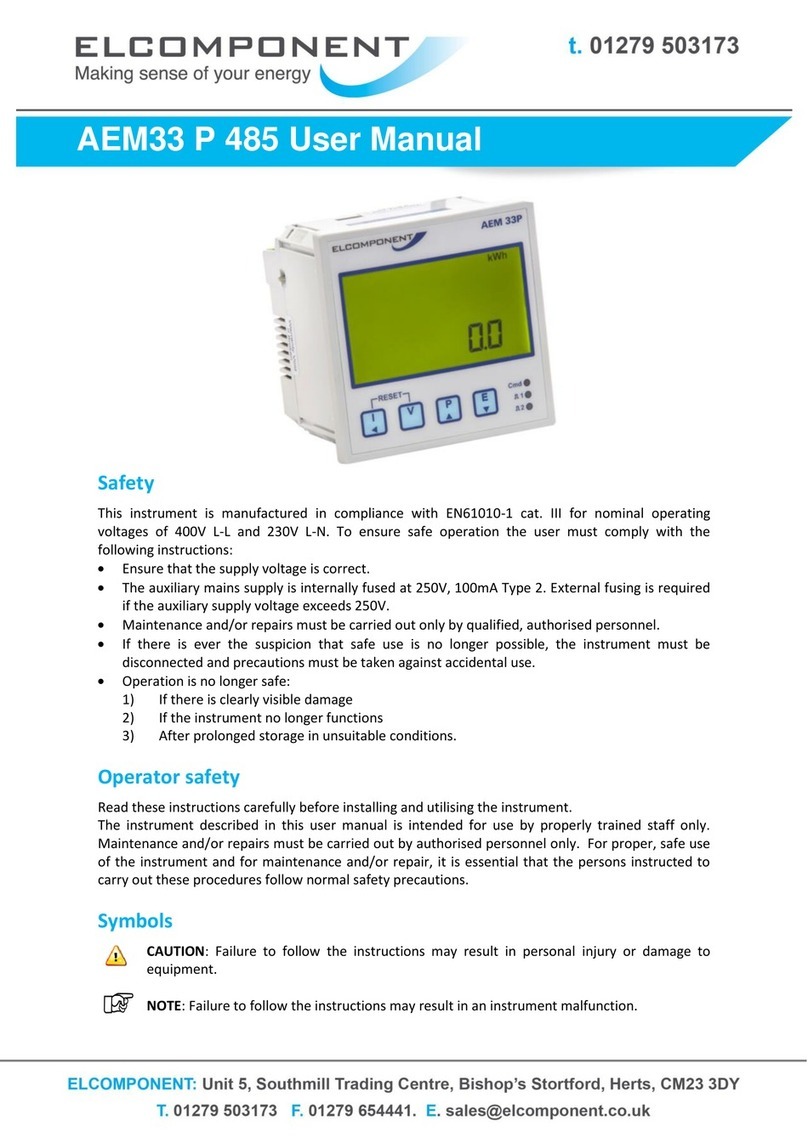
Elcomponent
Elcomponent AEM33 User manual
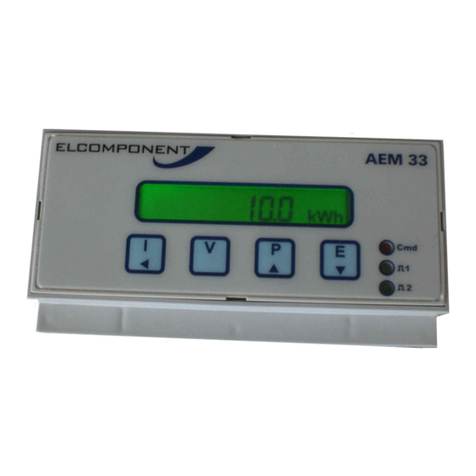
Elcomponent
Elcomponent AEM33 V 485 DIN User manual
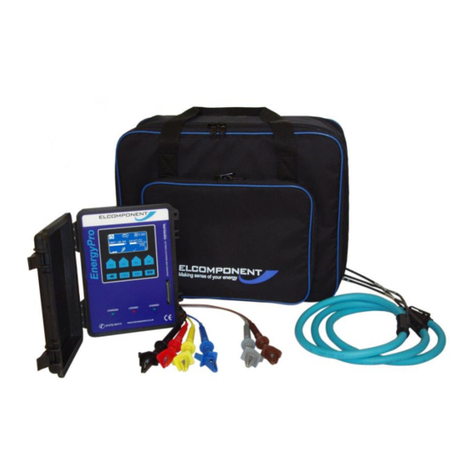
Elcomponent
Elcomponent EnergyPro EP600 User manual
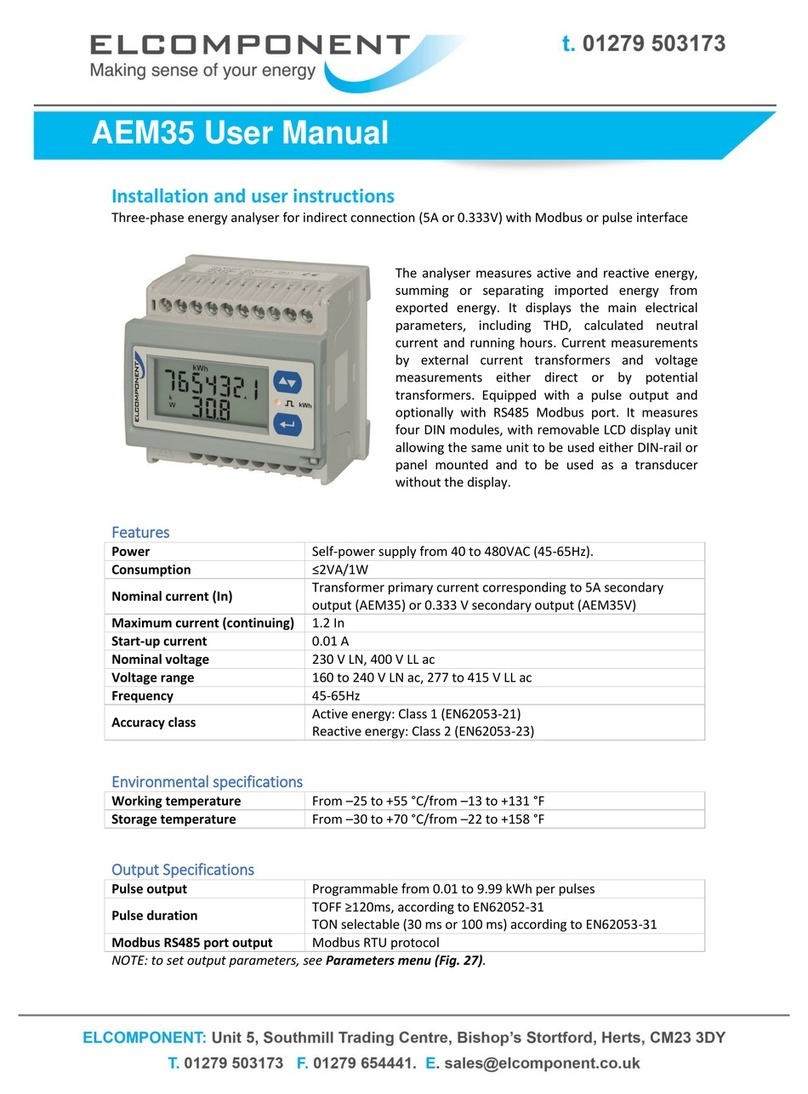
Elcomponent
Elcomponent AEM35 User manual
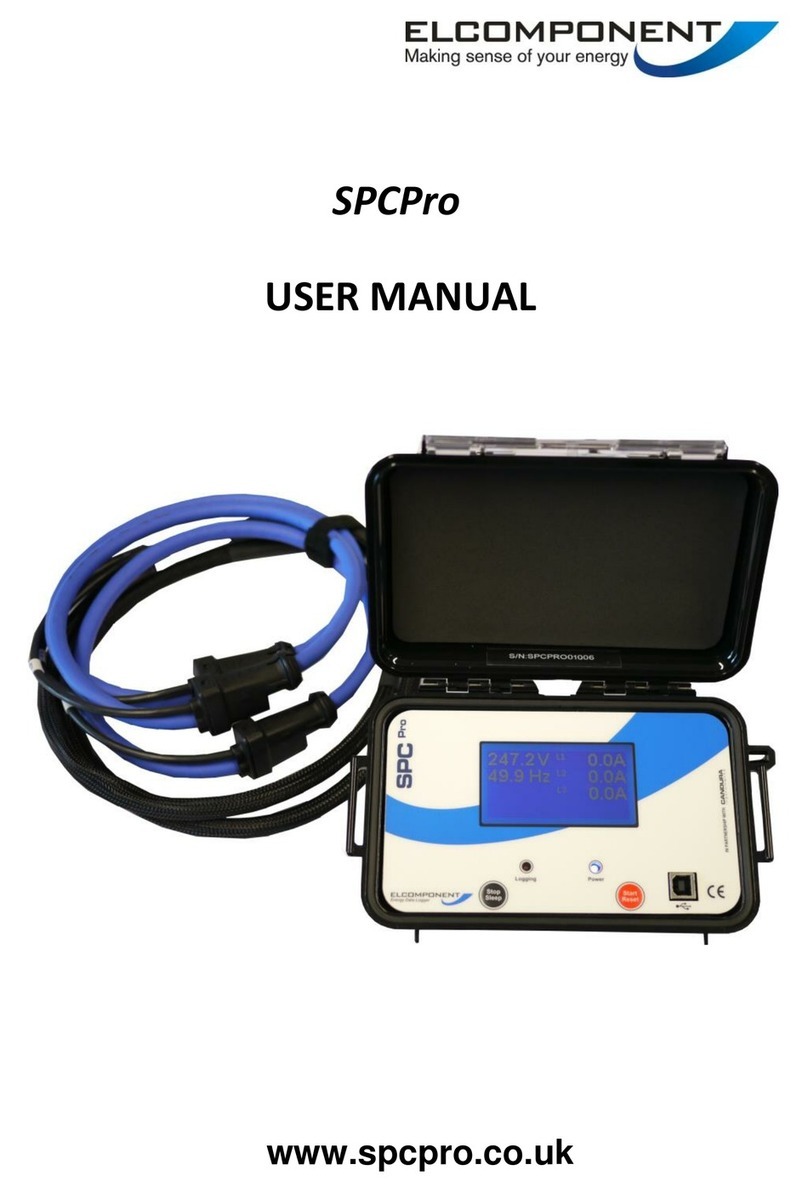
Elcomponent
Elcomponent SPCPro User manual

Elcomponent
Elcomponent AEM33 485 DIN User manual
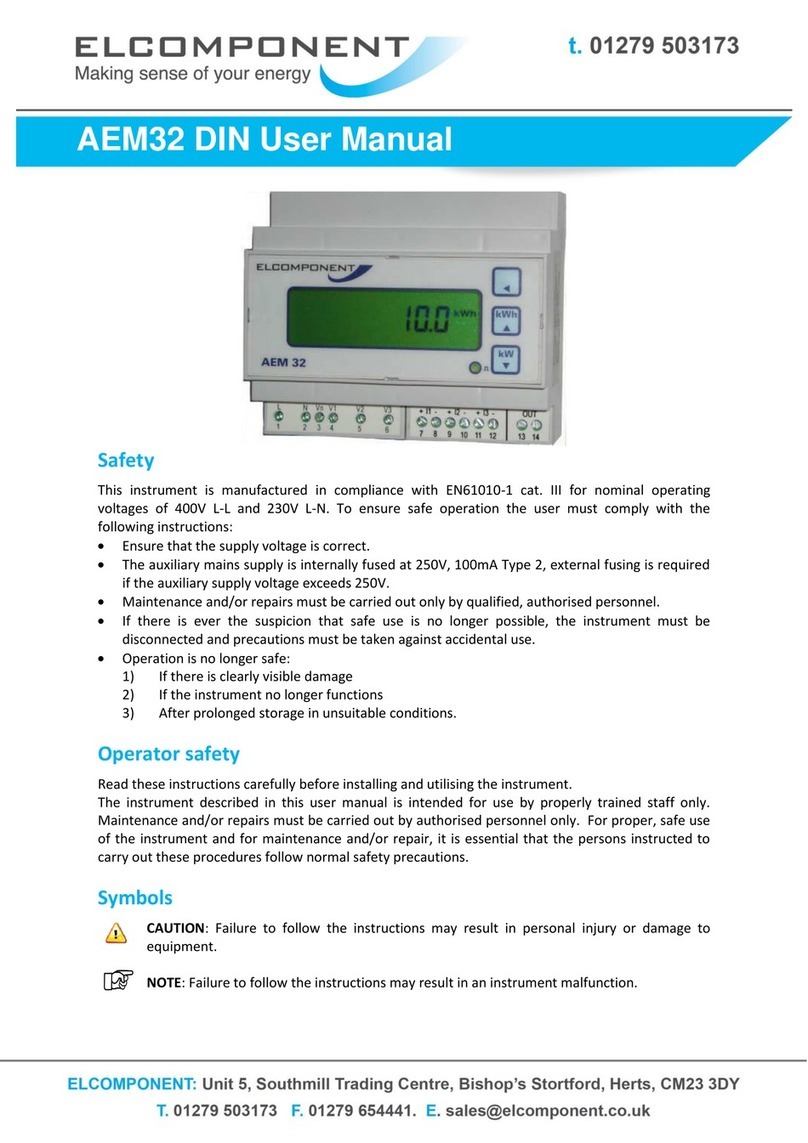
Elcomponent
Elcomponent AEM32 User manual
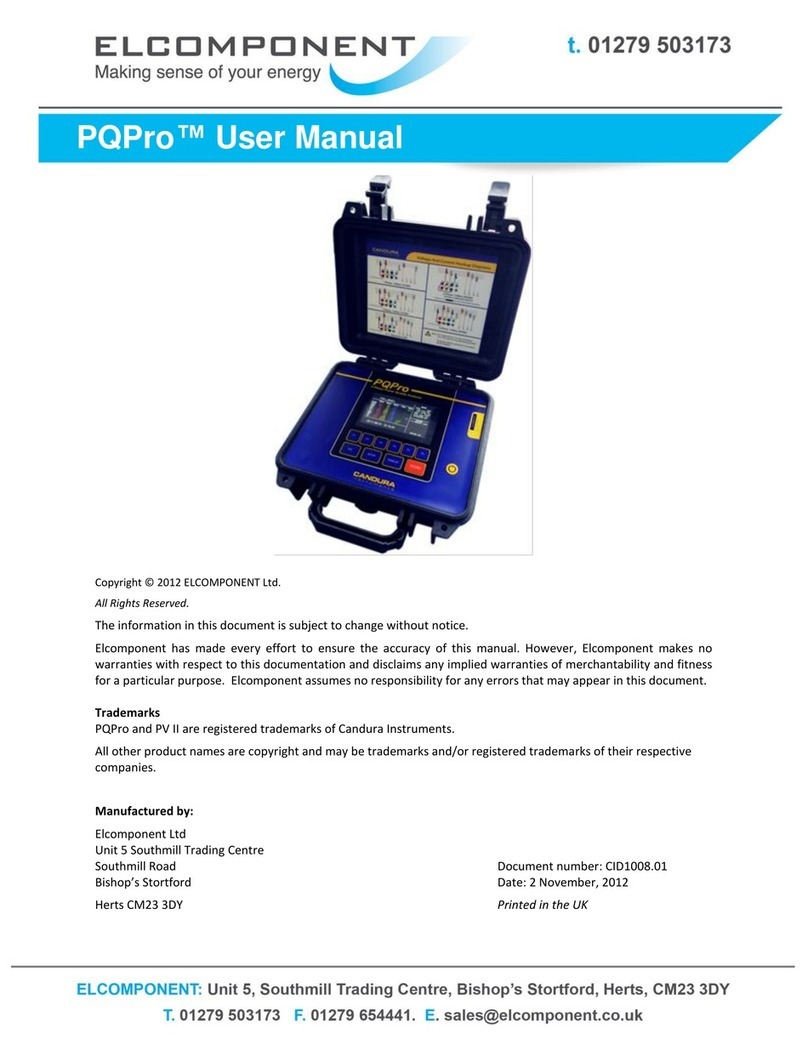
Elcomponent
Elcomponent PQPro User manual

Elcomponent
Elcomponent AEM33 User manual
